Montepulciano is Italy’s second most widely dispersed indigenous grape variety, surpassed only by Sangiovese. This classic Italian wine grape is primarily cultivated in the central regions of the country, including Abruzzo, Marche, and Molise. Known for its adaptability to both traditional and modern winemaking styles, Montepulciano produces deeply red, medium-bodied wines that are gaining popularity among wine enthusiasts worldwide.
The Montepulciano grape variety should not be confused with Vino Nobile de Montepulciano, which is a regional name for a Sangiovese-based wine from Tuscany. When crafted with care, wines made from Montepulciano grapes offer complex black fruit flavors and a smoky-sweet finish, making them an enticing choice for a variety of palates.

Its primary flavors include red plum, blackberry, dried thyme, and baking spices, combined with mesquite and medium-high acidity. Montepulciano wines can be enjoyed with a wide array of food pairings, owing to their versatile taste profile and balanced structure. As this grape variety continues to gain recognition, wine lovers can expect to see more Montepulciano offerings in the global market.
Origins and History
The Montepulciano grape is believed to have originated in Tuscany, and it is speculated to be related to the Sangiovese grape, with which it is often confused. The first-recorded mention of Montepulciano dates back to 1793, but it wasn’t until the turn of the 21st century that this grape variety, and its wines, gained widespread recognition and entered the international wine market.
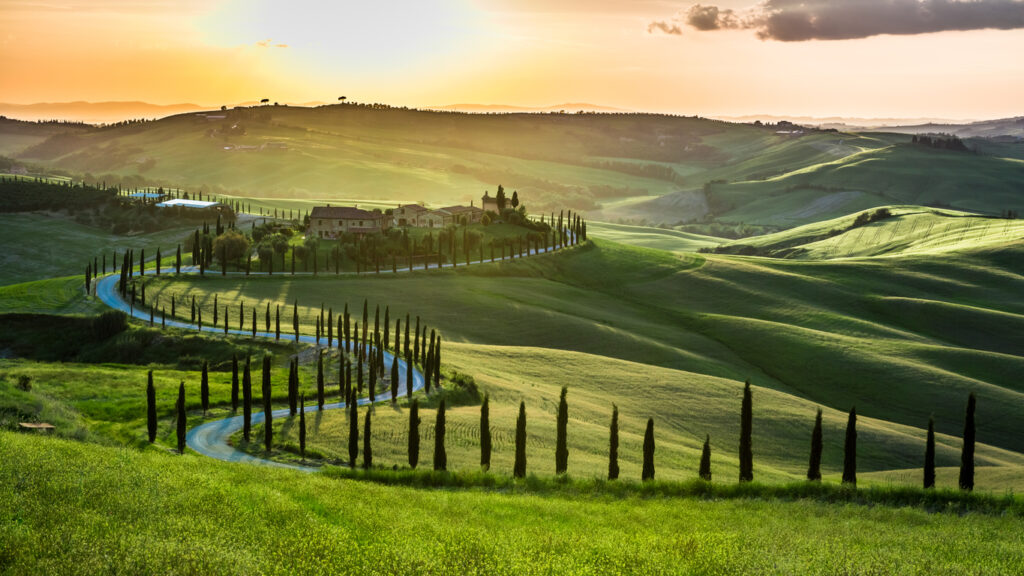
Today, Montepulciano ranks among the most popular grapes in Italian red wine export lists, trailing only behind Sangiovese. While it is extensively planted across Italy, its strong association with the Abruzzo region in Central Italy is undeniable. The grape produces the well-known Montepulciano d’Abruzzo wine, a medium-bodied, rustic red wine that beautifully reflects the terroir of the region.
Montepulciano is a highly adaptable grape, suitable for both traditional and modern winemaking styles. Its deep red hues and ability to produce wines with robust flavor profiles contribute to its growing popularity among wine lovers. Despite its potential confusion with Vino Nobile di Montepulciano – a Sangiovese-based wine from Tuscany – Montepulciano has successfully carved its niche in the world of wine, particularly in Central Italy.
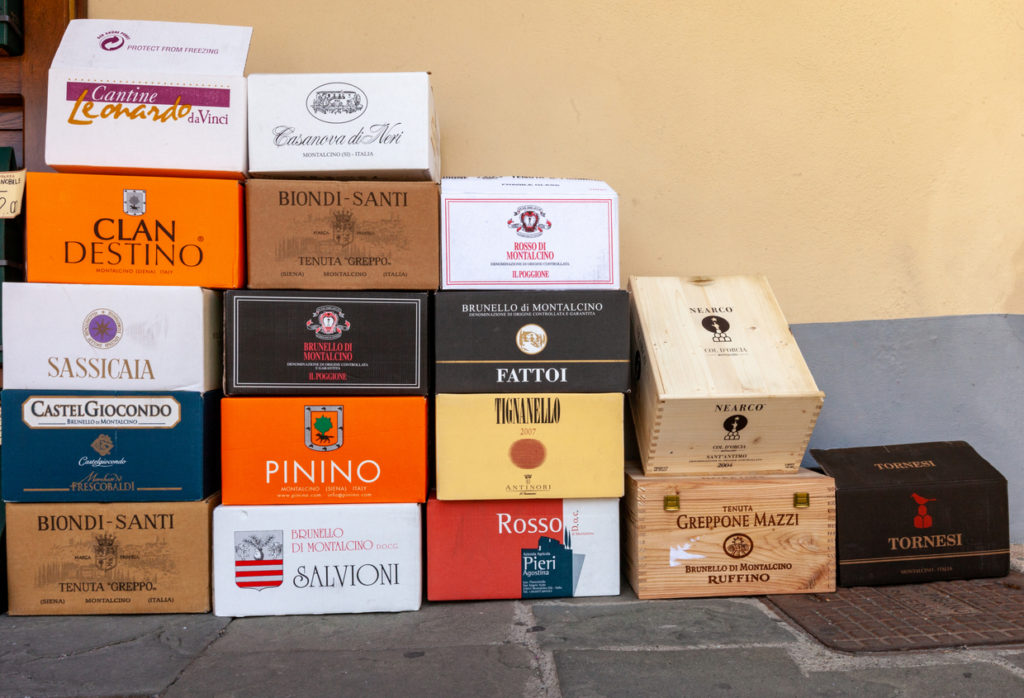
In conclusion, the Montepulciano grape, while having its roots in Tuscany, has flourished primarily in the Abruzzo region of Central Italy. With a rich history and versatile winemaking potential, Montepulciano continues to make a mark on the global wine stage and entice aficionados with its distinct charm.
Montepulciano D’Abruzzo
Montepulciano D’Abruzzo is an Italian red wine originating from the Abruzzo region of east-central Italy. It is made primarily from the Montepulciano grape variety, which is known for its deep red color and adaptability to various winemaking styles. This wine should not be confused with Vino Nobile di Montepulciano, a Tuscan wine made from Sangiovese and other grapes.
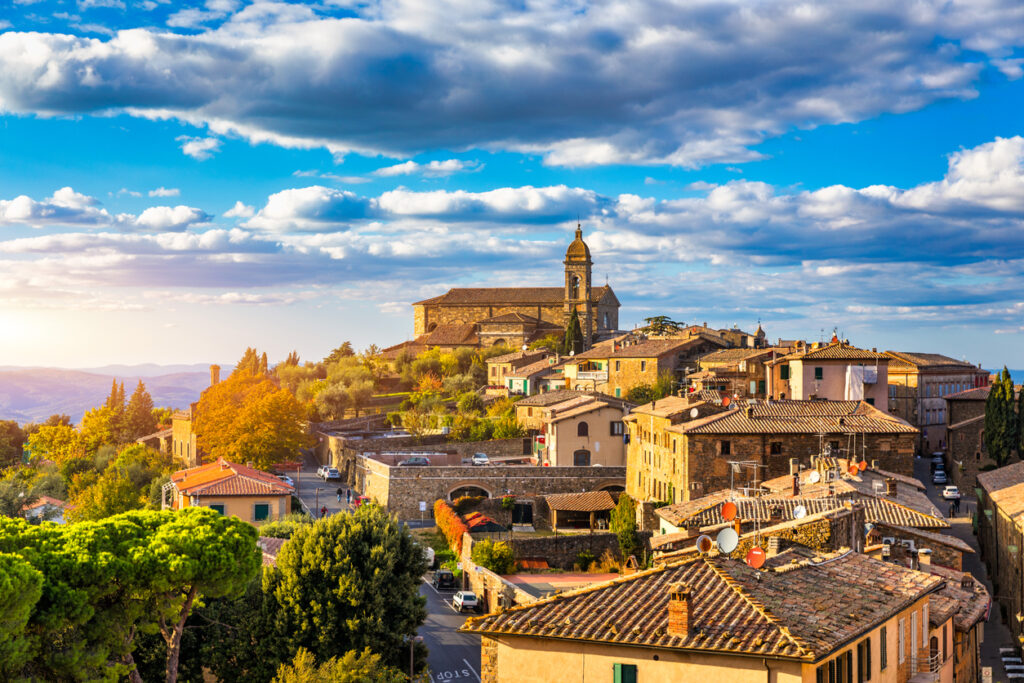
Montepulciano Grape in the Abruzzo Region
The Montepulciano D’Abruzzo wine was first classified as a Denominazione di origine controllata (DOC) in 1968. The DOC classification ensures that the wine is made adhering to specific quality standards and using grapes grown within the designated geographical area. The Abruzzo region boasts a diverse terroir, with varying elevations and microclimates that contribute to the unique flavors and characteristics of Montepulciano D’Abruzzo wines.
Sub-Regions
A notable sub-region within Abruzzo that produces Montepulciano D’Abruzzo is Colline Teramane. This area is known for its higher quality wines, which have earned the distinction of a separate DOCG classification. The Montepulciano grapes grown in Colline Teramane benefit from the region’s diverse soil composition and altitude, resulting in wines that exhibit a more refined and concentrated expression of the grape variety.

Aroma and Flavor
Montepulciano D’Abruzzo wines generally have a medium body and are characterized by their fruit-forward flavors, such as cherry and blackberry, accompanied by notes of herbs and spices. Tannins tend to be moderate, and the acidity is often well-balanced, making these wines versatile for pairing with various foods. Popular food pairings include pasta dishes with tomato-based sauces, grilled meats, and aged cheeses.
In conclusion, Montepulciano D’Abruzzo is a distinctive red wine that showcases the Montepulciano grape variety and highlights the unique characteristics of the Abruzzo region. With its approachable flavors and versatility, it continues to gain global recognition and appreciation among wine enthusiasts.

Montepulciano in Other Regions
Montepulciano grape is predominantly cultivated in the Abruzzo region of Italy, where it is used to create the famous Montepulciano d’Abruzzo wine. However, this versatile grape variety can also be found in other Italian regions, contributing to the diversity and richness of Italian winemaking traditions.
Tuscanny
In Tuscany, Montepulciano grapes can be found, although the region is more renowned for its Vino Nobile di Montepulciano, which is actually made from Sangiovese grapes. Nonetheless, the Montepulciano grape provides an additional component to the region’s wine profile, offering another expression of Tuscany’s terroir.
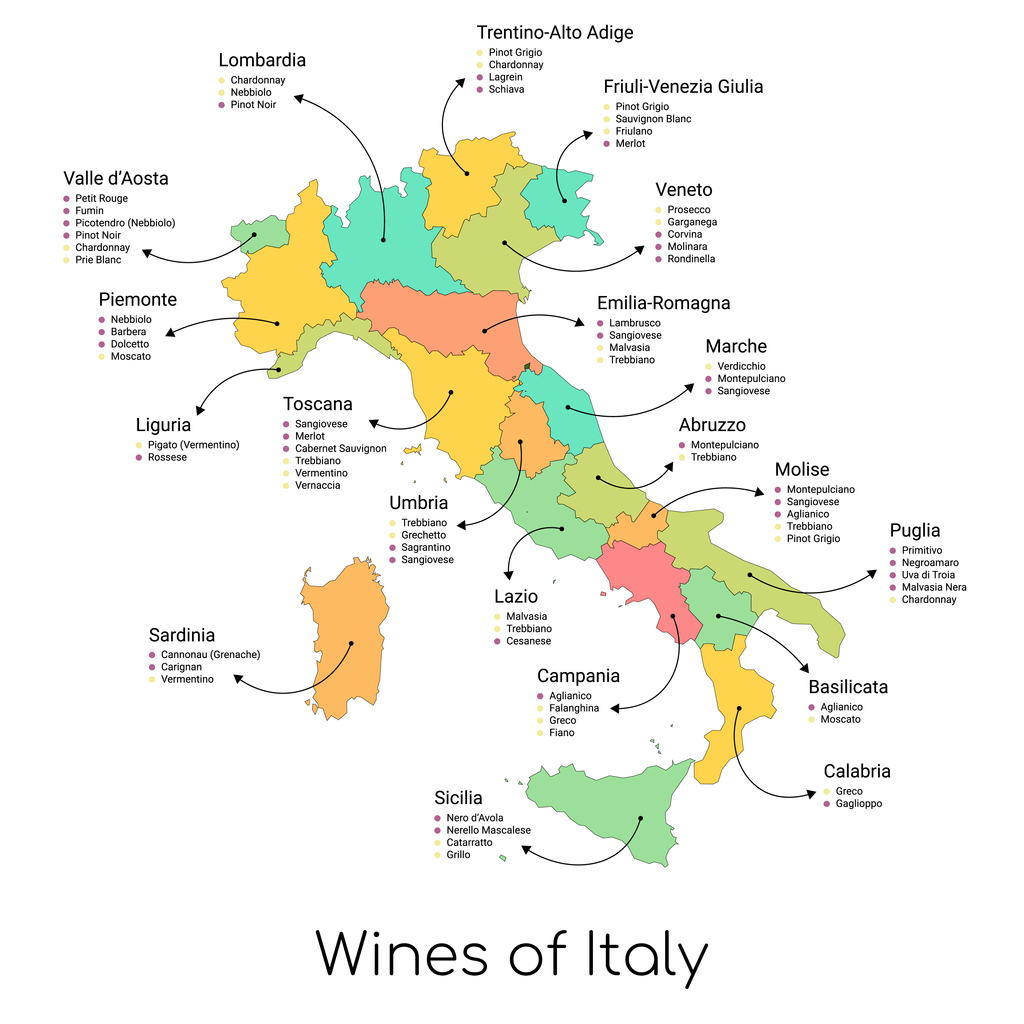
Marche Region
The Marche region, located in central Italy, is another area where Montepulciano grapes thrive. Here, the grape is often blended with Sangiovese to create the Rosso Conero and Rosso Piceno wines. These blends highlight the complementary characteristics of both grape varieties, with Montepulciano imparting its deep red color and dark fruit flavors.
Umbria Region
Moving further south, Montepulciano grapes also play a significant role in the winemaking of the Molise, Lazio, and Umbria regions. In Molise, the grape is used to make Biferno Rosso and Pentro di Isernia, both red wines known for their full-bodied and tannic profiles. Winemakers in Lazio blend Montepulciano with other local grapes to produce wines such as Cesanese del Piglio and Colli Etruschi Viterbesi. In Umbria, the grape is often used in the production of fruity, easy-drinking reds.

Puglia
Lastly, in the Puglia region, Montepulciano grapes contribute to the creation of flavorful, high-quality red wines. Salice Salentino and Copertino are the two notable appellations where Montepulciano is blended with the region’s primary grape, Negroamaro, to produce powerful, full-bodied wines.
The Montepulciano grape’s adaptability to various regions emphasizes its importance in Italian winemaking, as well as its versatility in contributing to a wide range of wine styles. From fruity, easy-drinking wines to full-bodied, tannic blends, Montepulciano proves to be an essential grape variety across numerous Italian winemaking regions.
Characteristics of Montepulciano Grape
Grape Variety
Montepulciano is Italy’s second most widely dispersed indigenous grape variety, making it a classic and important part of the country’s winemaking tradition. It is a recommended planting in various regions across Italy, including Apulia, Molise, Lazio, Umbria, Marche, Emilia-Romagna, Abruzzi, and Tuscany. Outside Italy, the Montepulciano grape has also found a home in the sunny wine regions of Australia, New Zealand, and the United States.

Color
Montepulciano grapes produce wines with a deep and rich red color. As the grape ripens, the pigmentation intensifies, resulting in a wine hue that ranges from medium to full-bodied red. This characteristic color adds to the visual appeal and allure of Montepulciano wines.
Tannins and Acidity
The Montepulciano grape is known for its medium to high level of tannins and balanced acidity. They contribute to the structure and complexity of the wine. The grape’s tannins provide a slightly astringent, mouth-drying quality. The balanced acidity ensures that Montepulciano wines remain fresh and lively on the palate.

Flavors and Aromas
Montepulciano wines boast a robust and diverse collection of flavors and aromas. Common fruit flavors include plum, cherry, blackberry, boysenberry, and red plum. The wine’s complex fruit profile is often complemented by distinctive herbaceous notes, such as fresh or dried herb characteristics. This combination of flavors and aromas makes Montepulciano wines an ideal candidate for aging. The different elements harmonize and develop over time, allowing the wine to reveal its full potential.

By understanding the characteristics of Montepulciano grapes, wine enthusiasts can appreciate the unique qualities that make this variety a vital and cherished component of Italian winemaking. With its rich color, strong tannins and acidity, and complex flavors and aromas, Montepulciano wines are a bold testament to the elegance and versatility of this remarkable grape.
Pairing Montepulciano with Food
When it comes to Montepulciano, a medium-bodied red wine, food pairings are abundant. This is particularly due to its naturally high acidity, grippy tannins, and robust herbal and tobacco-like flavors. This grape variety produces wine that shines when paired with a diverse range of food.
Meat
Meat dishes, particularly those involving beef and lamb, are excellent complements to Montepulciano. A hearty beef Bolognese or tender lamb kebabs can bring out the best in this wine. Moreover, the bold flavors of Montepulciano stand up well to the richness of cheese. This makes it a delightful choice for a cheese board or a classic baked ziti.

Pasta and Pizza
Pizza and pasta, two Italian staples, also pair beautifully with Montepulciano. The wine’s herbal notes enhance the flavors of sausages and pepperoni, especially when found atop a meat lover’s pizza. Regard pasta dishes, Montepulciano’s high acidity complements pasta carbonara and tomato-based sauces, such as marinara, while the wine’s tannins contrast nicely with creamy dishes like lasagna.

Vegetables
Mushrooms can be a Montepulciano’s best friend due to a harmonious pairing between the earthy flavors of mushrooms and the wine’s tannins. A hearty mushroom risotto or an umami-rich mushroom stroganoff can elevate the wine’s flavors and vice versa.
In summary, the versatility of Montepulciano makes it an exceptional choice for various food pairings, whether it be meat, cheese, pizza, or pasta dishes. When paired with the right foods, Montepulciano shines, creating delectable combinations that delight the taste buds.
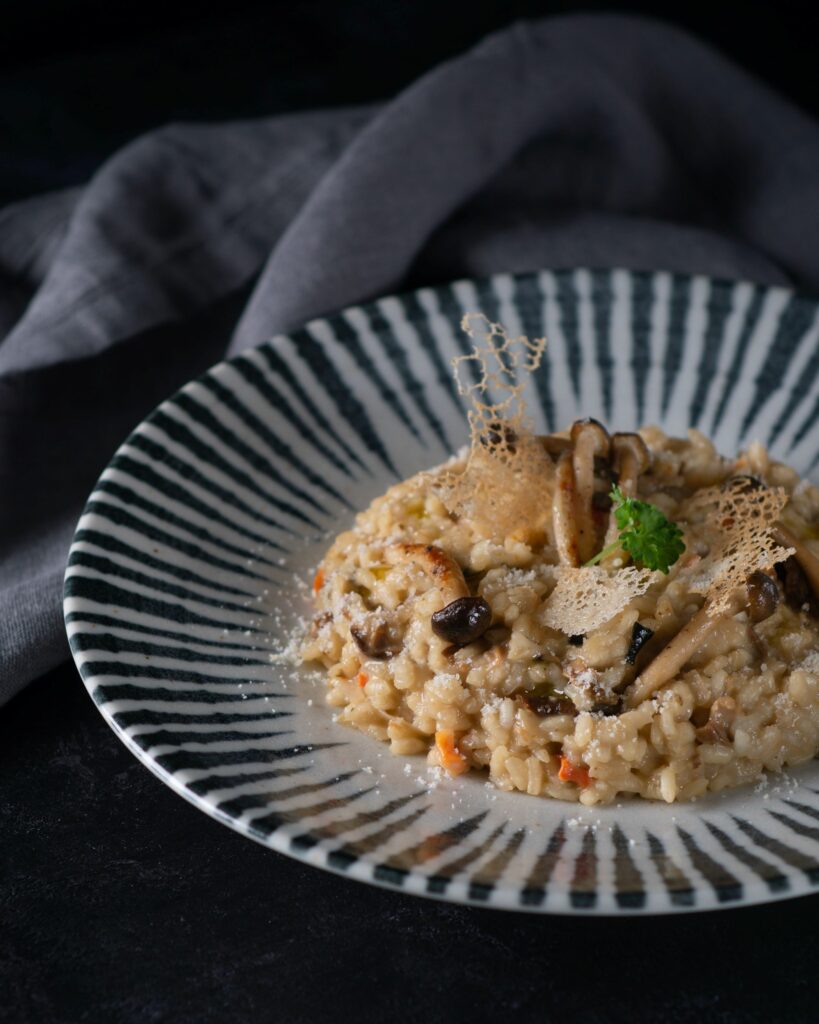
Other Montepulciano Wines
In addition to the famous Montepulciano d’Abruzzo, other notable wines are made from Montepulciano grapes. Two such wines are Rosso Conero and Rosso Piceno, both originating from the Marche region. These central Italian wines are known for their high quality, even though they may not be as well-known as their Montepulciano d’Abruzzo counterparts.
Rosso Conero
This is a DOC wine mainly composed of Montepulciano grapes, sometimes blended with a small percentage of Sangiovese. This red wine showcases a deep ruby color, fruity aromas, and a well-structured palate. It is adaptable to a range of aging potential, from young and fresh to more complex, aged expressions.

Rosso Piceno
Another central Italian DOC wine that features Montepulciano grapes, often blended with Sangiovese for added complexity. The wine exhibits a bright ruby red hue, an elegant bouquet of red fruits, and balanced tannins. It pairs well with a variety of dishes and can be enjoyed young or aged for several years.
Cerasuolo d`Abruzzo
Meanwhile, Cerasuolo d’Abruzzo is a distinctive rosé wine produced in the Abruzzo region. Made primarily from Montepulciano grapes, this wine has a bright cherry-pink color and offers intense fruit aromas with notes of red berries, cherry, and floral tones. It is fresh and versatile, making it a perfect summer wine to enjoy with light dishes or on its own.
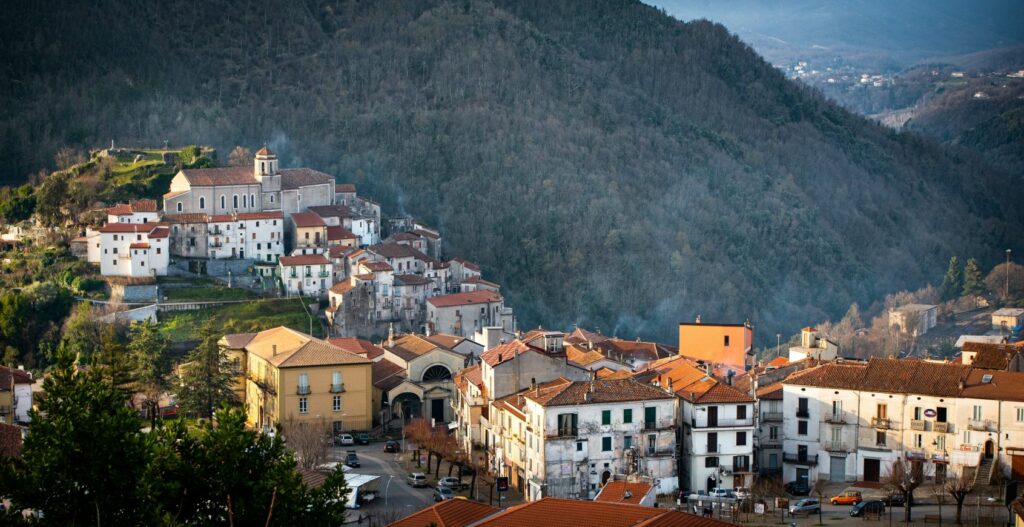
Montepulciano wine vs Vino Nobile di Montepulciano
It’s essential to not confuse Montepulciano wines with the Vino Nobile di Montepulciano. The latter is a prestigious DOCG wine made with Sangiovese grapes, despite the name similarity. This red wine comes from the Tuscan town of Montepulciano. It showcases structured tannins, complex aromas, and a long-lasting finish, making it an excellent choice for aging and pairing with robust meals.
In conclusion, Montepulciano grapes contribute to a diverse array of quality wines, extending beyond the well-known Montepulciano d’Abruzzo to other Italian regions. Enjoying these distinct expressions of Montepulciano wines provides a broader understanding of this versatile grape’s potential.

Winemaking Styles and Techniques
Montepulciano is a versatile grape variety, originating from central Italy, known for adapting well to various winemaking styles and techniques. The grape produces deeply red, medium-bodied wines, showcasing a range of flavors from fruit-forward to more complex, structured styles.
Traditional winemaking techniques for Montepulciano often involve the use of oak barrels for aging. Oak imparts a depth of flavor and smoothness to the wine, enhancing its natural characteristics. Medium to long-term oak aging can result in rich, layered wines with pronounced tannins and balanced acidity.
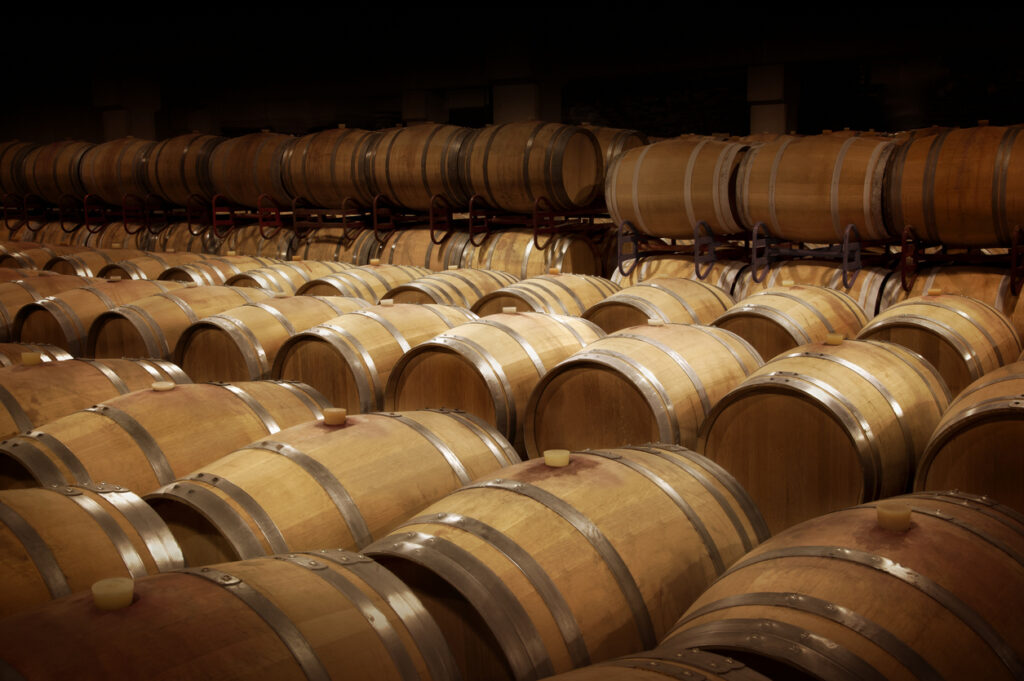
Modern Winemaking Techniques
For a more modern approach, winemakers may opt for shorter periods of oak aging or entirely forego oak to produce a fresher, fruitier style. These wines typically have a strong red fruit profile, such as cherry or plum, and exhibit a more approachable mouthfeel.
In addition to producing full-bodied reds, Montepulciano grapes can also be crafted into dry rosé wines. Winemakers achieve this by limiting the grape skins’ contact with the juice during fermentation. This results in a lighter color and more delicate flavors. Montepulciano rosé can showcase a range of fruity and floral notes, providing a refreshing alternative to the grape’s more robust red incarnations.
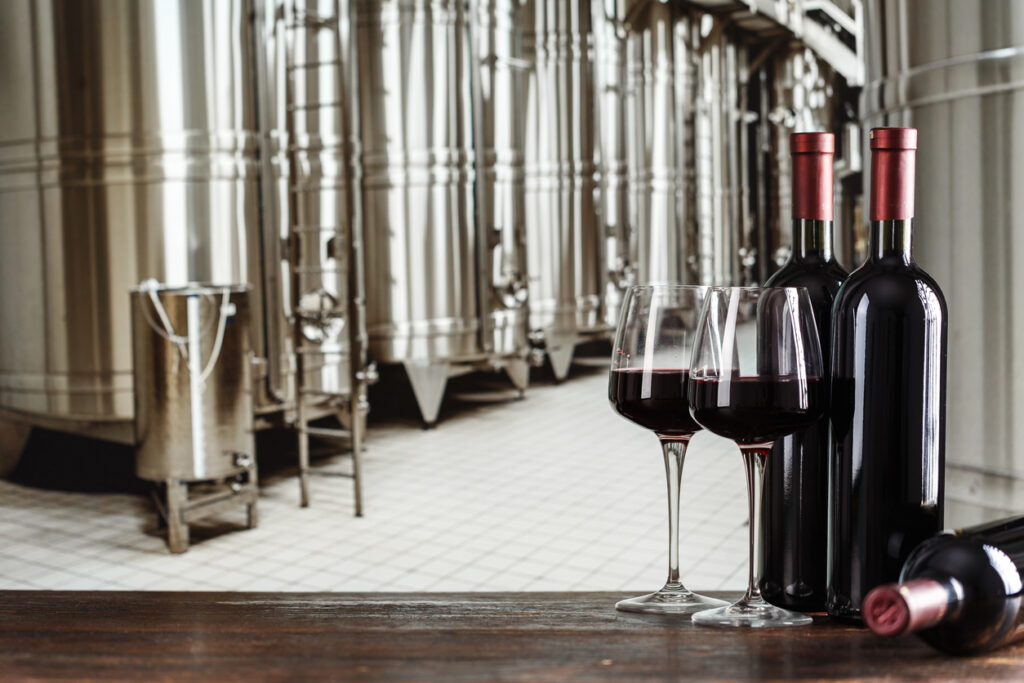
Blending Grape
Montepulciano grapes can be used in blends alongside other Italian grape varieties like Barbera and Pugnitello. When blended, Montepulciano’s roundness and fruit-forward nature complement the bright acidity of Barbera and the intense, earthy flavors of Pugnitello. This blending can create more complex wines with unique expressions of each grape’s individual characteristics.
In summary, Montepulciano adapts well to different winemaking styles and techniques, from traditional oak aging to modern stainless steel fermentation. The grape’s versatility allows it to shine as a single-varietal wine, in blends with other grapes, or even as a refreshing rosé.

Montepulciano in the New World
The Montepulciano grape is native to Italy. This versatile variety has found success in different regions of the New World, including the United States, Australia, and New Zealand. It is known for producing deeply red wines with medium body. This has encouraged wine producers to experiment with it outside of its traditional origins.
Australia
Montepulciano has gained popularity in regions such as Barossa Valley, McLaren Vale, Adelaide Hills, and Riverland. Winemakers in these regions have embraced the grape’s ability to produce wines with rich fruit flavors, moderate acidity, and firm tannins. The Australian Montepulciano wines often showcase flavors of red and black fruits. You can find plum and blackberry, alongside spice and earthy notes.

New Zealand
The Wine market in New Zealand has also seen a rise in interest for Montepulciano. You can find it particularly in the North Island region. The warmer climate is conducive to the growth of this sun-loving grape. The Montepulciano wines produced in New Zealand exhibit the variety’s characteristic bold flavors. Many wineries opt for a fruit-forward style that is approachable and easy-drinking.
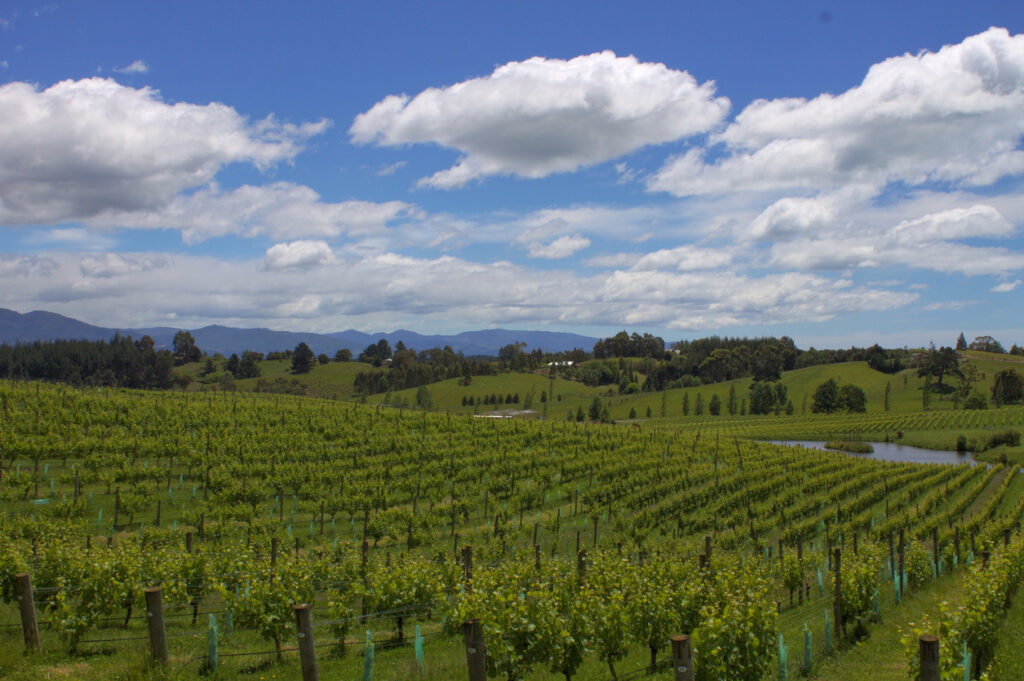
USA
In the United States, Montepulciano has found a home in various regions across the country. You can find it, particularly in warmer climates such as California and Texas. American Montepulciano wines are often produced in small quantities and feature a New World style. They focus on showcasing the fruit-forward nature of the grape. At the same time they maintain the rustic charm that is reminiscent of Italian examples.
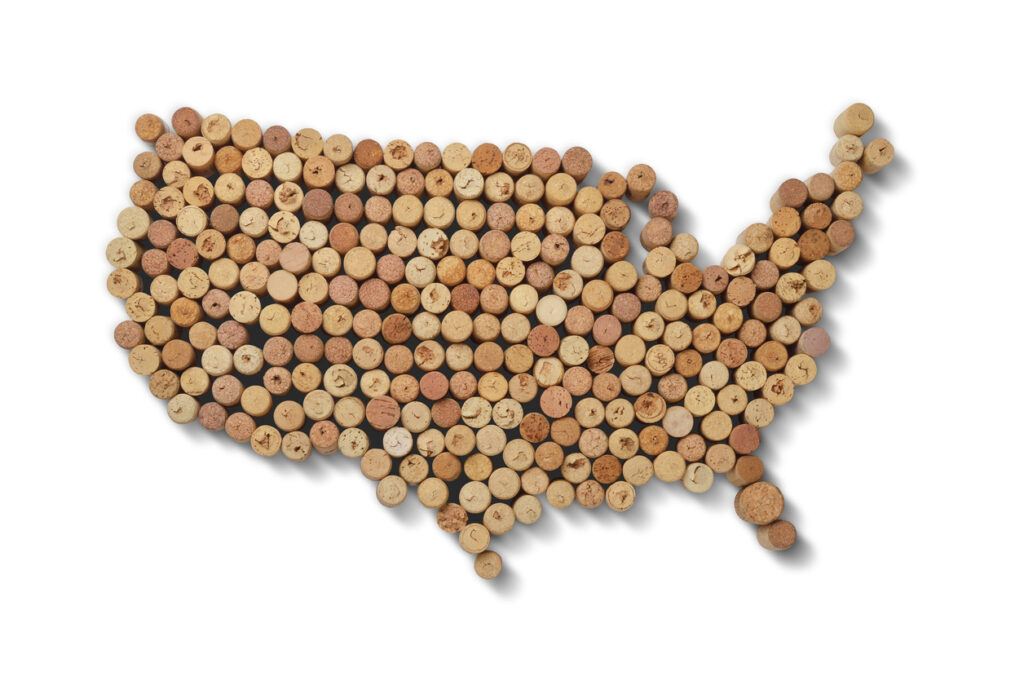
Overall, the Montepulciano grape has proven to be an adaptable and valuable addition to the world of wine. Especially in various New World regions it proved to be a valuable addition to the world of wine. By embracing the unique qualities of this distinctive grape, wine producers in these regions are able to create exciting and innovative expressions. These have captured the attention of wine enthusiasts around the globe.
Notable Winemakers and Vineyards
Montepulciano is Italy’s second most widely dispersed indigenous grape variety. It is primarily grown in central Italy, including regions such as Abruzzo, Marche, Molise, and Tuscany. This grape variety is known for producing deeply red wines that are adaptable to both traditional and modern winemaking styles.
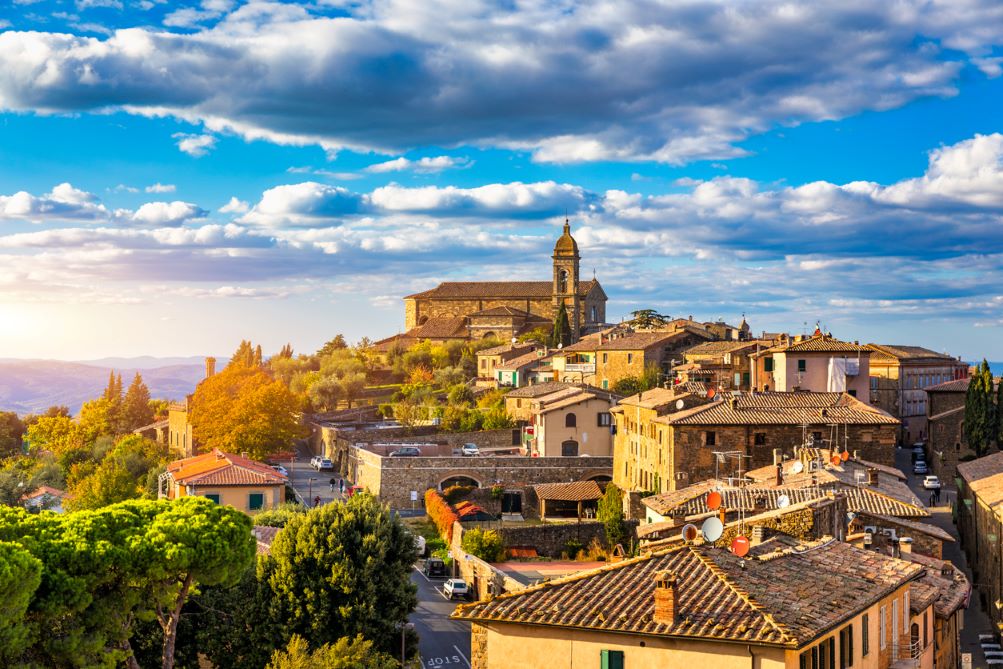
Vino Nobile di Montepulciano
Among the many Montepulciano wines, Vino Nobile di Montepulciano stands out as a historically significant and high-quality wine. It is produced in the picturesque hill town of Montepulciano in Tuscany. The Vino Nobile is made primarily from Montepulciano grapes with a small percentage of other varieties allowed. Vino Nobile di Montepulciano has been regarded as a distinguished wine for centuries. It is often praised for its rich flavors and aging potential. You might find a Riserva version as well, which requires additional aging and tends to be the product of exceptional vintages.
Montepulciano Grape in the Abruzzo Region
Controguerra DOC is another noteworthy region where Montepulciano grapes are prominently grown. This wine-producing area is located in the Abruzzo region. The winemakers specialize in producing red wines from Montepulciano grapes, often blended with other local varieties.
Winemakers
There are several prominent winemakers and vineyards that specialize in crafting Montepulciano wines. The De Ricci Winery and Ercolani Winery in Montepulciano, Banfi Winery, Canalicchio Di Sopra Winery, and Altesino Winery in Montalcino have established their reputation for producing exceptional Montepulciano wines. These wineries often strive to maintain traditional winemaking methods. At the same time they try to incorporate modern techniques to enhance the characteristics of the grape.
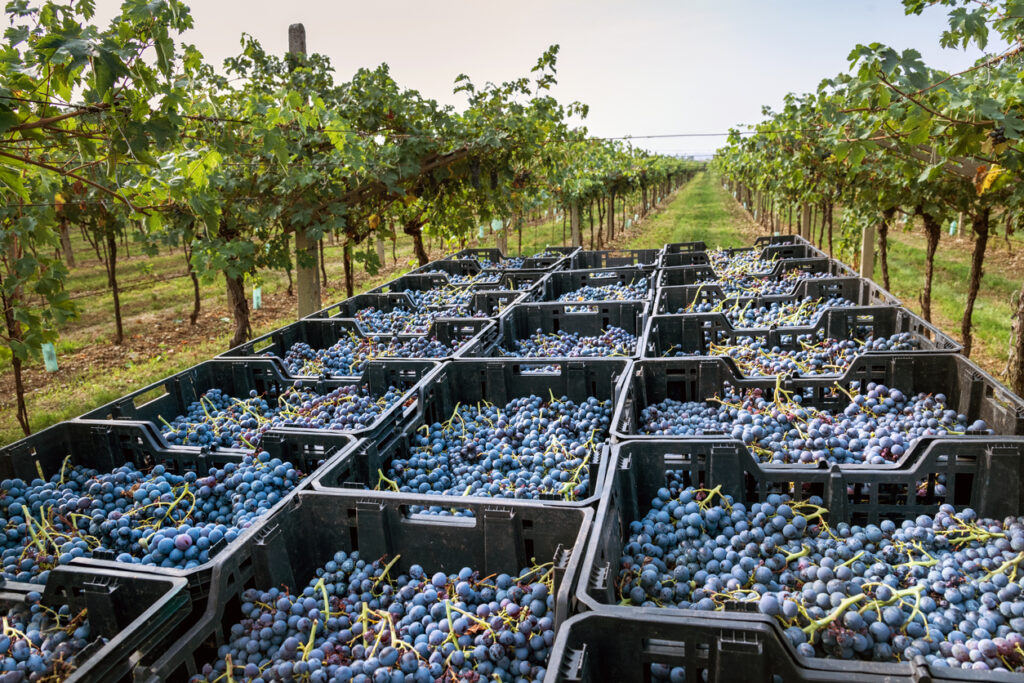
In conclusion, the Montepulciano grape and its resulting wines hold a special place in the world of Italian viticulture. From Vino Nobile di Montepulciano to Controguerra DOC wines, the various expressions of this grape continue to impress wine enthusiasts and connoisseurs alike. Thanks to the dedication of skilled winemakers and vineyards across Italy’s diverse wine regions.

